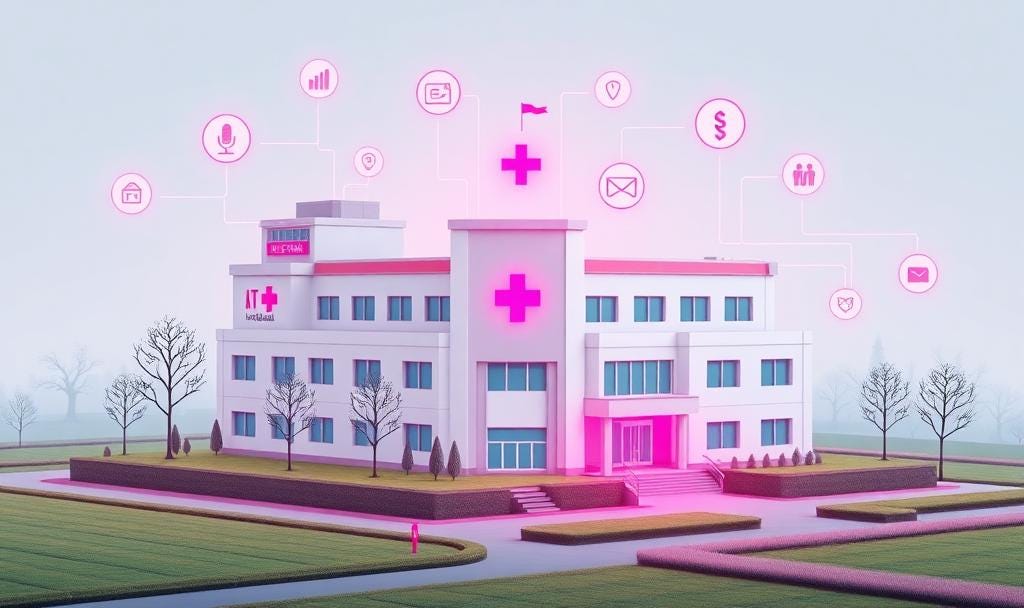Rural Hospitals Don’t Just Want Innovation. They Need Infrastructure That Pays for Itself.
Health tech companies have to rethink how they sell (not just what they sell), repositioning their products as core infrastructure that delivers value now and helps sustain hospital operations later.
The One Big Beautiful Bill (H.R.1) says federal dollars are coming to rural communities, but hospitals still feel like they’re bracing for impact, not growth.
There’s a deeper tension behind the optimism: how rural hospitals prepare now will determine whether they can survive what comes next. And for health tech companies, it changes a lot about how you market, position and sell.
Front-Loaded Money, Back-Loaded Cuts
The Rural Health Transformation Program appropriates $10 billion per year from 2026-2030, but almost two-thirds of the Medicaid spending cuts won’t hit until after 2030.
The $50 billion rural fund only offsets about one-third of the estimated $155 billion in rural Medicaid cuts over the same period, according to KFF analysis. That means much of the federal assistance will already be spent before the heaviest budget cuts hit.
Hospitals will need solutions that pay for themselves twice:
Once during the federally-funded implementation phase
Again during the post-funding period when the deepest financial pain begins
And there’s another constraint: states must spend funds by the end of the following fiscal year in which they are awarded, and all dollars must be spent before October 2032.
Health tech companies that understand these timing dynamics can position their solutions as cost-saving infrastructure that delivers value now and can survive future financial tightening.
Quick Caveat: Nobody Knows How This Actually Works Yet
The rural health program was added as a last-minute political compromise, and the implementation details are still murky.
"I have more questions than I have answers,” said Alan Morgan, CEO of the National Rural Health Association, a nonprofit policy group. “No one has those answers yet.” Both critics and supporters acknowledge the uncertainty, and as of this writing, there's still no application available for states despite the December 31 deadline.
This uncertainty doesn't mean ignoring the opportunity. It means building marketing strategies that work regardless of how the funding ultimately flows. The fundamentals still matter: positioning, relationships and value propositions that resonate across multiple scenarios.
And always, always stay adaptable, friends.
From Innovation to Infrastructure: A Positioning Pivot
Of the $50 billion, $25 billion will be distributed at state discretion, and they can use it for technology solutions, workforce retention, cybersecurity improvements and AI training. States will be looking for hospitals that they believe can deploy federal dollars quickly, effectively and show measurable outcomes.
Health tech companies typically emphasize clinical innovation and improvements when courting hospital buyers. In this environment, your narrative shifts to positioning as:
Part of a funding strategy: Help hospitals become more competitive for federal dollars by demonstrating technical readiness, implementation planning and outcome measurement capabilities.
Sustainable over the long term: Lead with operational efficiency and cost reduction rather than clinical features and innovation. Show how your solution helps hospitals manage increased uncompensated care while building long-term financial resilience.
A multi-category solution: Show how your platform meets multiple funding priorities (for example, telehealth that addresses workforce retention AND chronic disease management).
Deployment-ready: States face tight spending deadlines, making speed and proven results a major differentiator.
What This Means for Your Strategy
To compete effectively in this new reality, your go-to-market plan needs a reset:
Sell a two-phased ROI: Frame your solution as infrastructure with short-term payback during the funding window and long-term cost savings that persist post-2030.
Back it up with case studies: Build stories that prove your value across both phases. Document specific metrics like reduced labor costs, decreased readmission rates or improved cash collection that hospitals can use to justify investments to state agencies and sustain the investment when funding dries up.
Create urgency around preparation: Implementation details are still unclear, but the December deadline looms. Hospitals that show they're ready to launch quickly may have a leg up in securing state funding.
Make outcome measurement a feature: States must submit annual reports to the Centers for Medicare and Medicaid Services (CMS) on fund usage. Help your hospital partners track population health improvements, cost savings and care quality metrics over multiple years. This builds loyalty and makes your platform more attractive.
Geographic prioritization: Not every state will prioritize the same strategies. Prioritize geographies where your solution matches the funding categories, and understand the differing dynamics between Medicaid expansion and non-expansion states.
Act Fast. Think Long.
Companies that adjust quickly will win both the near-term dollars and the long-term hospital relationships. Those that keep leading with buzzwords may find their message out of sync with what rural hospitals actually need: sustainability.
Need help shifting your strategy from “cutting-edge” to “cost-saving infrastructure”? Let’s talk.
P.S. Forward this to your sales team. Understanding the funding timeline could help them navigate deals that might otherwise stall or die.
About the Author
Heather Lodge, Fractional Chief Marketing Officer, The Hybrid CMO
Heather helps growing health tech and healthcare service companies transition from ‘spaghetti-against-the-wall’ marketing to scalable operations so they can go toe-to-toe against better-funded rivals. She helps establish clear market positioning, develop focused account-based marketing programs and build the systems and teams needed to scale effectively. Heather’s approach combines strategic leadership with hands-on execution, building marketing programs that drive consistent revenue growth.




